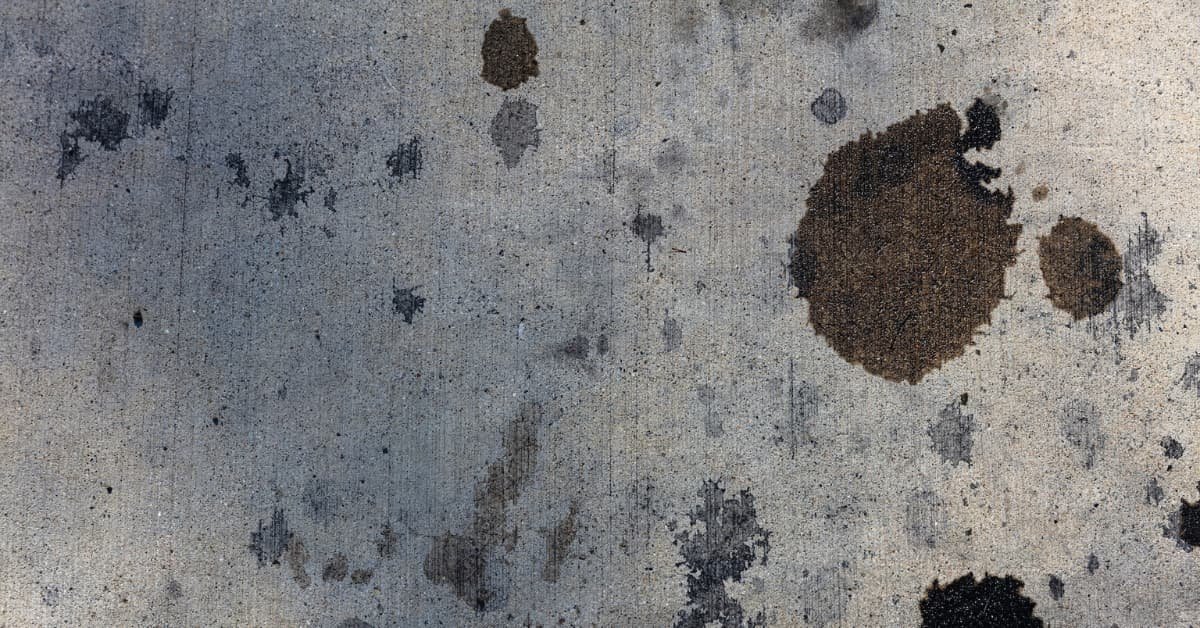
Concrete patios can be a beautiful addition to any outdoor space, providing a durable and low-maintenance surface.
But, when it comes to dealing with dog urine stains and odors, concrete can pose a challenge.
The porous nature of concrete allows urine to penetrate deep into the surface. Because of this, it is difficult to remove with conventional cleaning methods.
The presence of uric acid in urine can release unpleasant odors when exposed to moisture.
This article aims to provide a guide on removing dog urine stains from concrete patios.
We will discuss how to identify urine stains. We will also show you various cleaning techniques and strategies for preventing future accidents.
By following these steps, you can ensure a clean and odor-free outdoor space that you can enjoy.
Short Summary
- Concrete is porous and urine seeps into it, making it difficult to remove
- Conventional cleaning products are ineffective at removing urine stains and can make the odor worse
- Enzymatic cleaners are necessary to remove uric acid crystals and rid the odor
- Sealing the concrete patio is recommended to prevent future urine messes and improve the appearance
Identifying Urine Stains
One method for addressing dog urine stains and odors on concrete patios is by using a blacklight.
Blacklights emit ultraviolet light that can make urine stains fluoresce. This makes them easier to locate on the concrete surface.
This method is great because it helps identify the problem and enables targeted cleaning.
Once you identify the urine stains, use alternative cleaning solutions to remove the stains and odors.
Cleaning Techniques
Some alternative cleaning solutions include a mixture of TSP (trisodium phosphate) and water for scrubbing the concrete. You can also use hydrogen peroxide or a mixture of vinegar and baking soda.
It is important to note that these solutions will help remove bacteria and some urine stains, but they may not eliminate uric acid crystals.
To remove uric acid crystals, use an enzymatic cleaner.
These cleaners contain special enzymes that break down the uric acid crystals, eliminating the source of the smell.
Using these cleaning techniques will restore the concrete patio to its original appearance. It will also eliminate any lingering urine odor.
Preventing Future Accidents
To prevent future incidents, train your dog to use designated areas for urination.
Dog training plays a crucial role in ensuring that dogs understand where they should relieve themselves.
Positive reinforcement, such as treats and praise, can encourage dogs to use the designated area.
Additionally, use outdoor deterrents to discourage dogs from approaching the concrete patio. Motion detector lights can startle dogs and deter them from accessing the patio.
Another option is to restrict a dog’s access to the patio when they are indoors.
By creating a designated spot for dogs to urinate in the yard and taking them to that area on a leash, dogs can learn the appropriate place for urination.
Rewarding them with treats and praise when they use the correct area further reinforces this behavior.
| Preventive Measures | Training Dogs |
|---|---|
| Implement outdoor deterrents (e.g., motion detector lights) | Use positive reinforcement, such as treats and praise |
| Restrict access to the patio when dogs are indoors | Create designated spots for urination in the yard |
| Consistently take dogs to the designated area on a leash | Reward dogs with treats and praise when they use the designated area |
FAQs:
How long does it take for the enzymatic cleaner to break down uric acid crystals on concrete?
Usually within 24 hours, the enzymatic cleaner will break down uric acid crystals on concrete.
Can I use bleach to clean dog urine stains from a concrete patio?
Yes, but vinegar can be used as a natural alternative to bleach for cleaning dog urine stains on concrete patios. Pressure washing can also remove dog urine stains from concrete patios.
Is it necessary to patch up cracks in the concrete before applying the sealer?
Yes, patching cracks in the concrete before applying the sealer is necessary to ensure a smooth and even surface.
This helps prevent moisture from seeping into the cracks and causing further damage. It will also make the sealer more effective.
How often should I reapply the sealer on a concrete patio?
It is recommended to reapply the sealer every 2-3 years to maintain its protective properties and ensure optimal performance.




